
Hundreds of Millions of Dollars Have Been Recovered for Injured Babies and Children
"*" indicates required fields
The birth of a child is supposed to be one of life’s best occasions. For months, you dream of holding your healthy baby, imagining a future filled with laughter, first steps, and endless possibilities. But for an unthinkable number of families in Camden and across New Jersey, this dream is shattered in an instant. During labor or delivery, something goes terribly wrong, and a baby is left with a severe, lifelong injury that could have—and should have—been prevented. This is the devastating reality of a medical malpractice birth injury.
Here at The Child Injury Firm, our team has dedicated decades to standing beside families throughout New Jersey and across the nation. We have sat in their living rooms and listened to their stories of heartbreak and resilience. We understand that the impact of a birth injury isn’t confined to the delivery room; it creates a ripple effect that touches every aspect of a family’s life, introducing a lifetime of complex medical care, constant worry, and staggering financial burdens.
In a medical malpractice birth injury case, our focus is on one critical question: did the actions of a healthcare provider—a doctor, nurse, midwife, or hospital—fall below the accepted “standard of care”? This legal term simply means they either did something a reasonably careful and skilled medical professional would not have done, or they failed to do something they should have done, and that mistake directly caused your baby’s harm.
This is not about blaming dedicated doctors for every challenging birth. But there are far too many times when negligence, communication breakdowns, and preventable mistakes cause injuries. In those moments, families deserve more than just sympathy. They deserve answers, accountability, and the financial resources necessary to give their child the best possible quality of life.
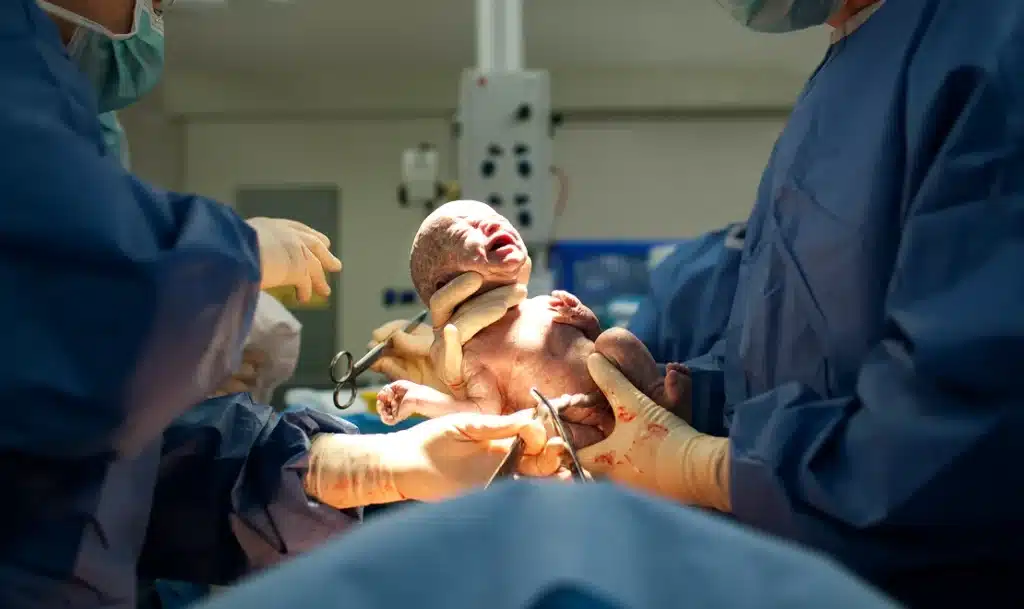

It is easy to assume that with modern medicine, serious birth injuries are a relic of the past. The data tells a different, more alarming story. These are not rare, isolated incidents; they represent a significant patient safety crisis happening in hospitals in our communities every single day.
Nationally, the statistics provide a sobering overview. According to the Agency for Healthcare Research and Quality (AHRQ), for every 1,000 infants born in U.S. hospitals, approximately 7 suffer some form of birth injury. While many of these are minor, thousands of children are left with permanent disabilities each year.
For families near me in Camden, it’s crucial to look at the local and state-level data. New Jersey has faced significant patient safety challenges. The Leapfrog Group, a national nonprofit that grades hospitals on their ability to protect patients from errors, injuries, and infections, consistently provides a mixed picture for the state. In their Spring 2024 Hospital Safety Grades, several hospitals in the Camden area received “C” grades. These grades are based on dozens of performance measures, including rates of infection, surgical errors, and communication breakdowns—all factors that can contribute to a catastrophic birth injury. For example, a key metric is a hospital’s ability to respond to critical events, a factor that is paramount during a complicated delivery.
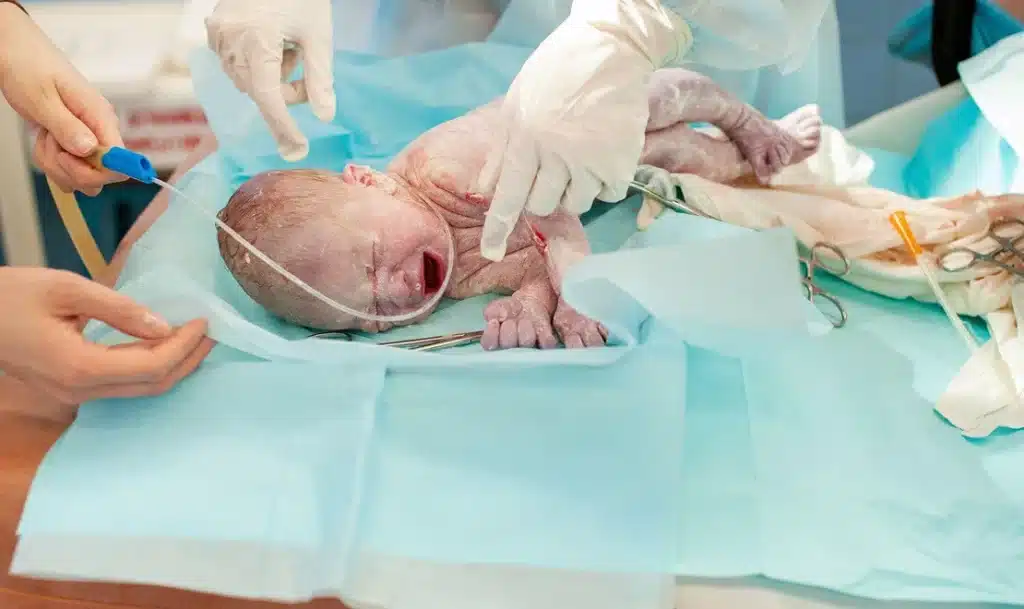

One of the most tragic and talked-about statistics in New Jersey’s healthcare landscape involves profound racial disparities in maternal and infant outcomes. This is not just a statewide issue but a crisis that deeply affects communities like Camden.
According to the New Jersey Department of Health’s most recent data, the infant mortality rate for Black infants is consistently more than three times higher than the rate for white infants. In Camden County, these disparities are stark. This isn’t a coincidence; it points to systemic issues, including disparities in the quality of care, communication between patients and providers, and the management of high-risk conditions that disproportionately affect Black mothers. These are not just numbers; they represent a fundamental injustice where a baby’s chance at a healthy life can be influenced by their mother’s race.
Source: New Jersey Department of Health, State Health Assessment Data (2022)
Birth injuries vary widely in severity, but many have the potential to alter a child’s life forever. Our team has extensive experience investigating the complex medical facts behind these conditions to determine if they were caused by negligence at a Camden-area medical facility.
Cerebral Palsy: This is a group of permanent movement disorders. It is most often caused by damage to the developing brain, which frequently occurs due to oxygen deprivation during a difficult birth. While the CDC notes a general prevalence of about 1 in 345 children, a deeper look at the data is revealing. Spastic cerebral palsy is the most common type, affecting approximately 80% of all individuals diagnosed. This is the type most often associated with brain damage from perinatal asphyxia (lack of oxygen). Medical errors like failing to monitor fetal distress or delaying a C-section are common culprits.
Erb's Palsy/Brachial Plexus Injuries: This injury involves damage to the bundle of nerves in the shoulder (the brachial plexus), often causing weakness or paralysis in the arm. It is a classic example of a preventable injury. It typically occurs when a baby's shoulder gets stuck behind the mother's pelvic bone (a condition called shoulder dystocia, which occurs in up to 1% of all births). If the doctor or midwife applies excessive force or improperly twists the baby's head and neck to resolve the situation, these delicate nerves can be stretched or torn.
Brain Injuries (Hypoxic-Ischemic Encephalopathy - HIE): This is a medical term for brain damage caused by a lack of oxygen (hypoxia) and blood flow (ischemia) to the brain. HIE occurs in an estimated 1 to 3 per 1,000 full-term births and is a leading cause of severe, long-term neurological disabilities, including CP and epilepsy. HIE is often the direct result of a medical team's failure to recognize and respond to clear signs of fetal distress shown on heart rate monitors.
Kernicterus: This is a completely preventable form of brain damage caused by untreated severe newborn jaundice. All newborns are monitored for bilirubin levels, but if a high level is ignored or improperly treated, the bilirubin can enter the brain and cause devastating, permanent neurological damage. The American Academy of Pediatrics has clear guidelines for testing and treatment, and a failure to follow them is a clear breach of the standard of care.
Spinal Cord Injuries: Though rare, these are among the most catastrophic birth injuries, often resulting in lifelong paralysis. Medical literature estimates these traumatic injuries occur in about 1 in 60,000 live births, almost exclusively during difficult deliveries involving excessive force or traction, particularly during a breech (feet-first) extraction.
Broken Bones (Fractures): While a fractured clavicle (collarbone) can occur even during a normal delivery, fractures to the humerus (upper arm bone) or femur (thigh bone) are significant red flags. These injuries are often indicative of a traumatic delivery where an inappropriate amount of force was used.
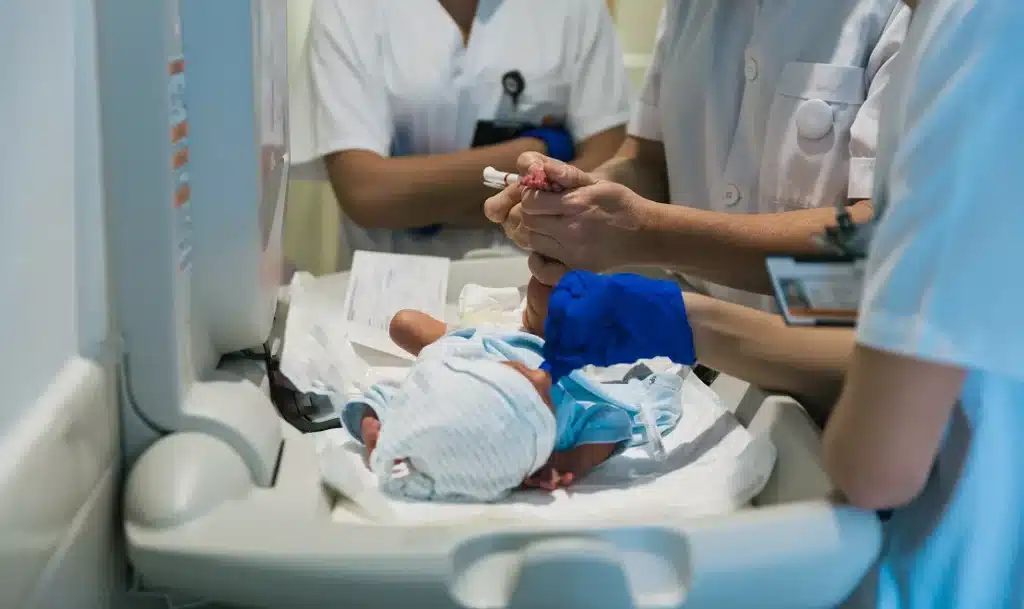

Medical professionals are trained to anticipate, identify, and manage risks during pregnancy and childbirth. Malpractice occurs when they fail in this duty. Here are some of the most common forms of negligence that lead to birth injuries:
Improper Use of Birth-Assisting Tools: Tools like forceps and vacuum extractors can be vital in a difficult delivery, but they are also dangerous when used improperly. Studies have shown that the rate of injury is significantly higher with these instruments. One study published in the Canadian Medical Association Journal found that instrumental deliveries had a 1-in-22 risk of severe birth trauma, compared to a much lower risk for unassisted or C-section births.
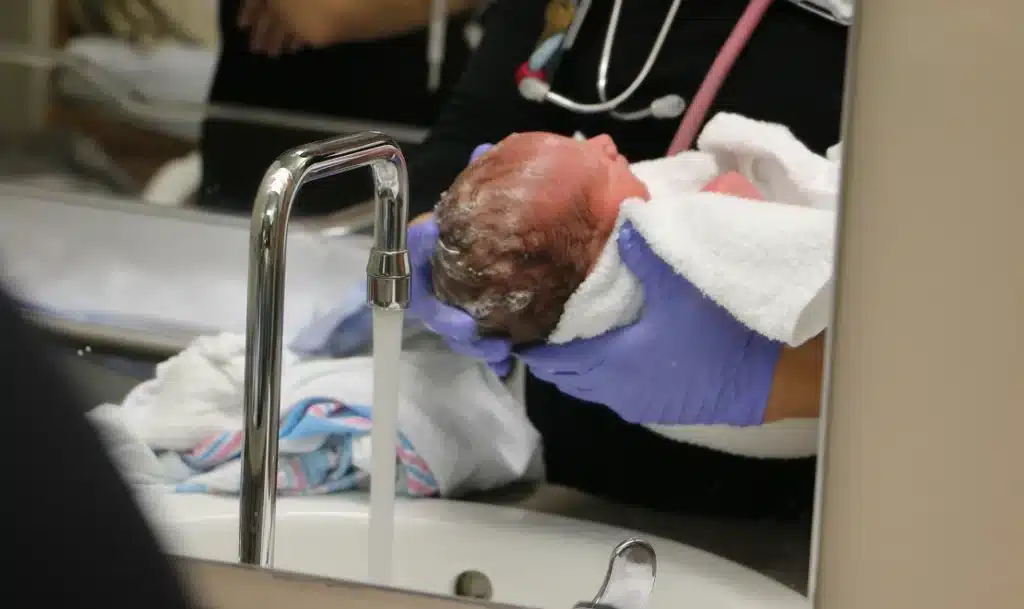
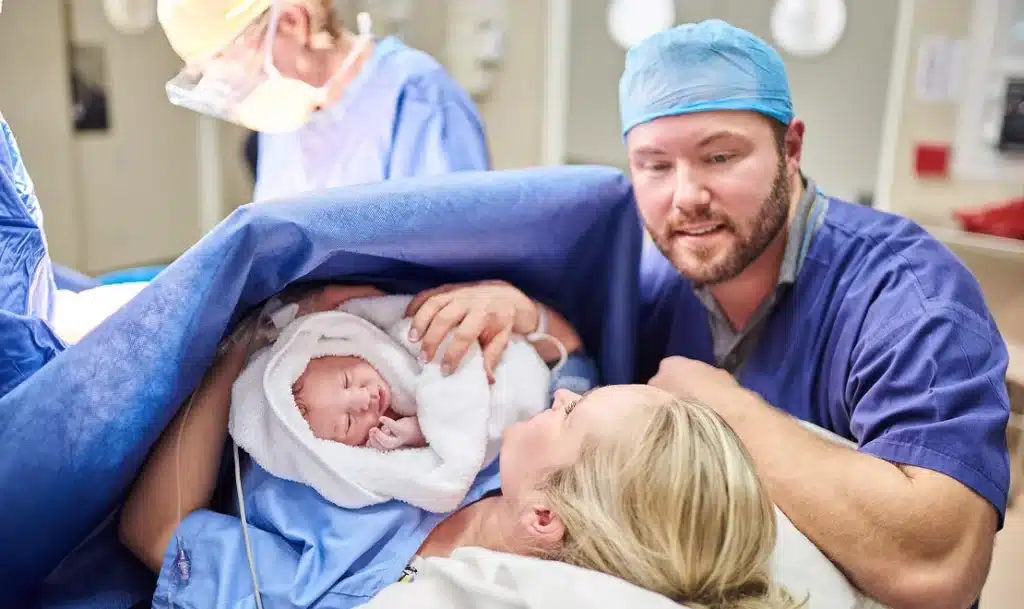
It is difficult to talk about money when a child has been so grievously harmed. But a medical malpractice lawsuit is the only legal mechanism available to provide a family with the financial resources their child will need to navigate a lifetime of challenges. These lawsuits often result in multi-million dollar verdicts or settlements because the costs of care are astronomical.
A study from the Journal of the American Medical Association (JAMA) found that while obstetrical events make up a relatively small percentage of all malpractice claims, they account for a disproportionately high percentage of the total money paid out. This reflects the severity and lifelong nature of these devastating injuries.


New Jersey and near me has a specific and often unforgiving set of laws for these cases. Navigating them without an experienced legal team is virtually impossible.
If your gut tells you something went wrong during your child’s birth, listen to that instinct. Here are the steps you should take:


A medical malpractice birth injury in Camden is often preventable and linked to failures in monitoring, delayed intervention, or mismanagement of maternal health.
The statistics, especially regarding racial disparities in Camden County and New Jersey, reveal a serious patient safety crisis.
The lifelong financial and emotional costs are immense, often requiring millions of dollars for proper care and support.
New Jersey's legal process is complex, with a strict Affidavit of Merit requirement and a statute of limitations that must be respected.
Your first steps should be securing medical care for your child, gathering all records, and immediately contacting our legal team that is highly experienced in birth injury law.

These resources offer medical information, support groups, and programs for children with disabilities resulting from birth injuries, with a strong focus on the Camden area.
This organization provides advocacy, support, and training to children and adults with intellectual and developmental disabilities and their families. Their state and local chapters can connect you with resources and support networks in your area, and they have a strong presence in Camden County. Website: https://www.arccamden.org/
If your child’s birth injury resulted in Cerebral Palsy, this is a valuable resource. They offer a range of programs and services for children and adults with Cerebral Palsy and related disabilities, including educational and therapeutic services across New Jersey. Website: https://cpofnj.org/
NJID offers a wide range of programs and support for infants, children, and adults with developmental and related disabilities across New Jersey. Their services include early intervention programs, specialized schooling, and adult services. Website: https://www.njid.org/
In New Jersey, a parent can generally file a malpractice lawsuit on behalf of their child anytime up until the child’s 13th birthday. While this may seem like a long time, it is crucial to act immediately. The best time to investigate a case is right away, while evidence like fetal heart monitor strips are still available and the memories of everyone involved are fresh.
This is a critical distinction that defense attorneys often try to blur. A birth defect is a condition that develops while the baby is in the womb, often due to genetic or unknown factors (e.g., a congenital heart defect). A birth injury is damage that occurs during the labor and delivery process, often as a direct result of medical negligence. Our job is to prove that your child’s condition was an injury caused by a mistake, not an unavoidable defect.
No, absolutely not. We work on a contingency fee basis. This means you pay absolutely no legal fees unless we successfully win your case through a settlement or a jury verdict. We cover all the upfront costs of litigation, which can be substantial, so your family can focus on your child without any financial burden.
This is a common and understandable fear. It is illegal and highly unethical for any medical provider to deny, alter, or provide substandard care to your child in retaliation for a lawsuit. Furthermore, as part of our work, we often help families connect with new, independent specialists at top-tier institutions to ensure their child receives the best care possible, free from any potential conflict of interest.
Signing a consent form does not give a doctor a free pass to be negligent. A consent form indicates that you understand the known and accepted risks of a procedure when it is performed correctly. It is not a waiver that protects a doctor or hospital from the consequences of medical malpractice or substandard care. You never consent to a preventable mistake.
It is impossible to give an exact number without a deep analysis of your case. The value is determined by a “life care plan,” a comprehensive report created by medical and financial experts that calculates the full cost of your child’s needs for their entire life. This includes all future medical care, therapies, surgeries, adaptive equipment, home modifications, and specialized education. Lost earning potential is also calculated. Our goal is to secure a recovery that meets every single one of your baby’s needs.
Your primary role is to continue being a loving parent and caregiver to your child. For the lawsuit, you are a crucial member of our team. You provide us with information, help us understand your child’s daily challenges and triumphs, and make the ultimate decisions about your case, such as whether to accept a settlement offer. We handle the complex legal work, the expert witnesses, and the fights with the insurance companies so you can focus on what matters most: your family.
It’s less common than you might think. According to a comprehensive study on medical malpractice claims by the U.S. Department of Justice, approximately 93% of medical malpractice cases are resolved out of court through a settlement. However, our firm prepares every single case as if it is going to trial. This meticulous preparation is what puts us in the strongest possible position to negotiate a fair settlement and shows the defense that we are ready to go to court if they are not willing to be reasonable.
This is a very common defense. We prove malpractice by using world-class, independent medical experts who will conduct a thorough review of every detail of your medical records. For example, they will analyze the fetal heart monitoring strips second-by-second to see if there were clear signs of distress that the medical team missed or ignored. They can determine if a delayed C-section was medically unjustifiable or if a specific maneuver during a difficult delivery violated the standard of care. It is this expert analysis that turns a so-called “complication” into clear evidence of negligence.
A lawsuit can and often should be filed against any and all medical professionals whose negligence contributed to the injury. This frequently includes labor and delivery nurses. Nurses are responsible for a significant portion of fetal monitoring, and a failure to recognize signs of distress and properly notify the physician is a major source of preventable birth injuries. The hospital itself can also be held liable for things like understaffing, inadequate training, or faulty equipment. We work to hold every responsible party accountable.
Catastrophic child and birth injuries can shatter the lives of not just the babies and children, but also their families. Families are left to navigate a complex maze of medical challenges, financial burdens, and emotional turmoil. But, this is where Jeffrey Killino and his team of dedicated lawyers can provide the support and guidance families need most.
Text With Us
We'll text you!
"*" indicates required fields
By submitting, you agree to be contacted about your request & other information using automated technology. Message frequency varies. Msg & data rates may apply. Text STOP to cancel. Privacy Policy
Call Me
We'll call you!
"*" indicates required fields
By submitting, you agree to be contacted about your request & other information using automated technology. Message frequency varies. Msg & data rates may apply. Text STOP to cancel. Privacy Policy
Book A Consultation
We're ready to answer your questions!
Email Us
We're available by email!
"*" indicates required fields
By submitting, you agree to be contacted about your request & other information using automated technology. Message frequency varies. Msg & data rates may apply. Text STOP to cancel. Privacy Policy
Text With Us
We'll text you!
"*" indicates required fields
By submitting, you agree to be contacted about your request & other information using automated technology. Message frequency varies. Msg & data rates may apply. Text STOP to cancel. Privacy Policy
Call Me
We'll call you!
"*" indicates required fields
By submitting, you agree to be contacted about your request & other information using automated technology. Message frequency varies. Msg & data rates may apply. Text STOP to cancel. Privacy Policy